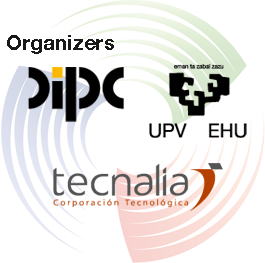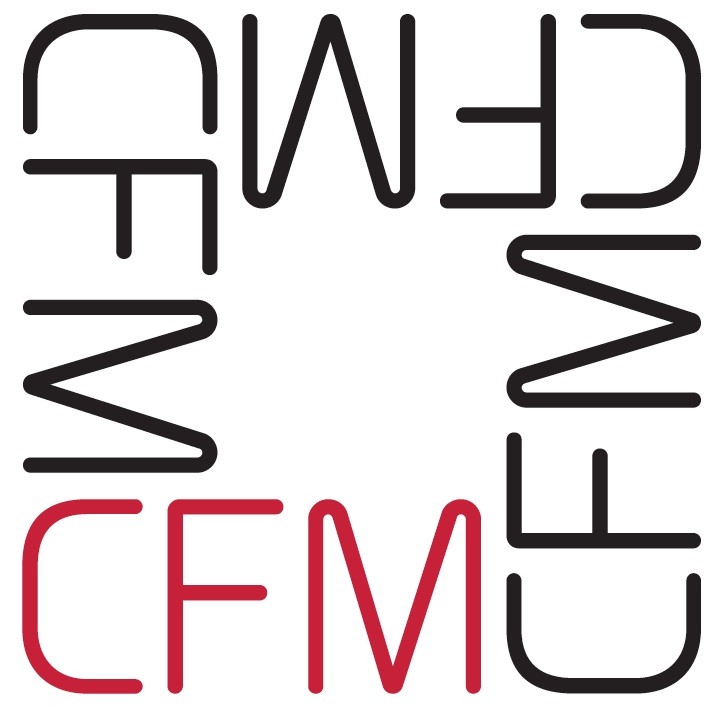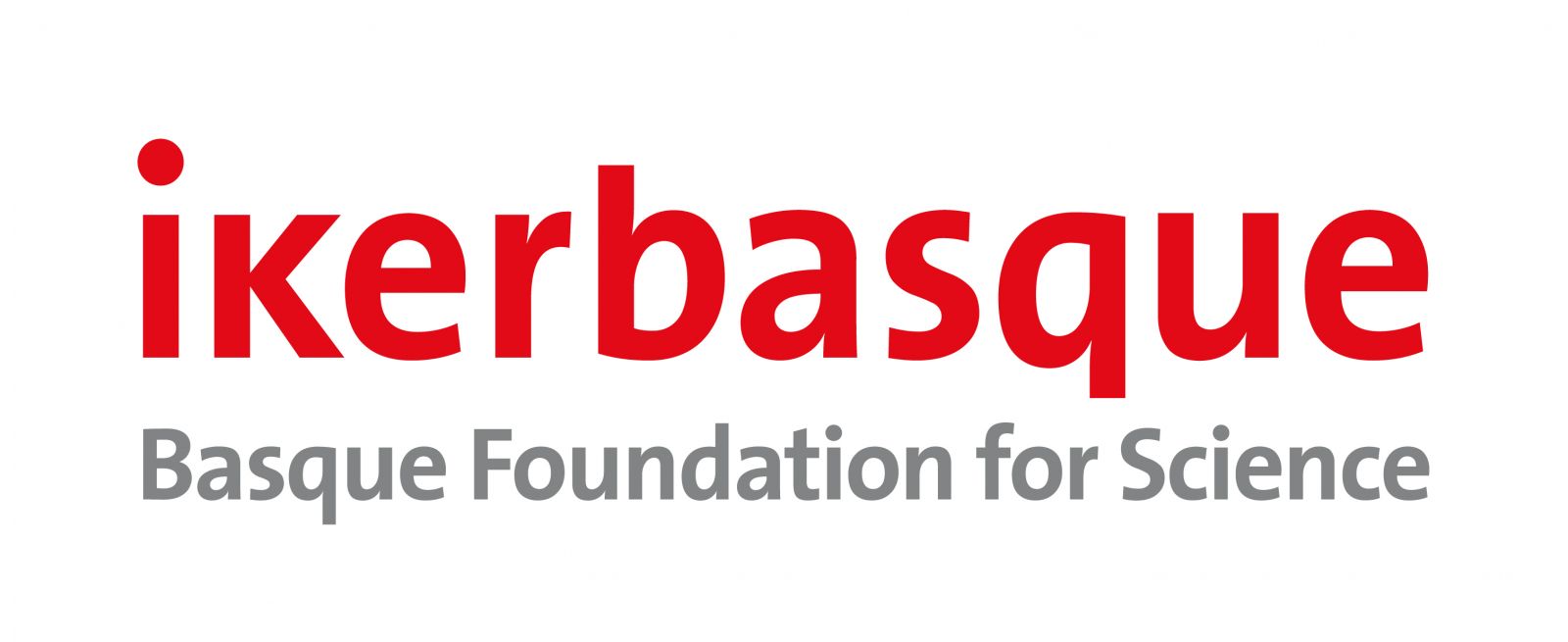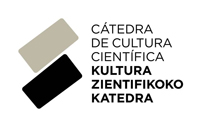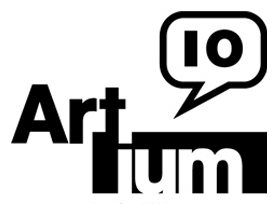Topaketak Invited Speakers
|
|
Vitoria - Gasteiz | ||||||
| Wednesday, 2 October | |||||||
|
Museo Artium |
|||||||
|
|||||||
|
|
Bilbao | ||||||
| Thursday, 3 October | |||||||
|
Bizkaia Aretoa |
|||||||
|
|||||||
 |
Dame Jocelyn |
||
|
A British astrophysicist. She graduated from the University of Glasgow with a BSc degree in Natural Philosophy (Physics) in 1965, and obtained her PhD from the University of Cambridge in 1969. As a postgraduate student at Cambridge, she discovered the first radio pulsars with her thesis supervisor Antony Hewish; for this Hewish shared the Nobel Prize in Physics with Sir Martin Ryle. After finishing her PhD, Bell Burnell worked at several universities and institutions in Britain, and was also a visiting professor at Princeton University in the United States. She was Dean of Science at the University of Bath (2001-04), and President of the Royal Astronomical Society from 2002-2004. President of the Institute of Physics (2008-2010), she is currently a Visiting Professor of Astrophysics at the University of Oxford and a Fellow of Mansfield College.
Although Bell was not included as a co-recipient of the Nobel Prize, which stoked some controversy at the time, she has been honoured by many organizations. Among other awards, she received the Albert A. Michelson Medal of the Franklin Institute of Philadelphia in 1973, the Herschel Medal of the British Royal Astronomical Society in 1989 and the Magellanic Premium of the American Philosophical Society in 2000. She has been awarded several honorary degrees too. Fellow of the Royal Society in 2003, she was made a Dame Commander of the Order of the British Empire in 2007.
|
|||
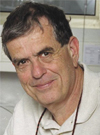 |
Aaron CIECHANOVER Biomedicine Technion, Haifa, Israel |
||
|
He was born in Haifa, Israel. He is a Distinguished Research Professor at the Technion - Israel Institute of Technology in Haifa. He received his M.Sc. (1971) and M.D. (1975) from the Hebrew University in Jerusalem, and his D.Sc. (1982) from the Technion. There, as a graduate student with Dr. Avram Hershko and in collaboration with Dr. Irwin A. Rose from the Fox Chase Cancer Center in Philadelphia, USA, they discovered that the covalent attachment of ubiquitin to a target protein signals it for degradation.
They deciphered the mechanism of conjugation, described the general proteolytic functions of the system, and proposed a model according to which this modification serves as a recognition signal for a specific downstream protease. As a postdoctoral fellow with Dr. Harvey Lodish at the MIT, he continued his studies on the ubiquitin system and made additional important discoveries. Over the years it has become clear that ubiquitin-mediated proteolysis plays major roles in numerous cellular processes, and aberrations in the system underlie the pathogenetic mechanisms of many diseases, among them certain malignancies and neurodegenerative disorders. Consequently, the system has become an important platform for drug development.
Among the numerous prizes Ciechanover received are the 2000 Albert Lasker Award, the 2003 Israel Prize, and the 2004 Nobel Prize (Chemistry; shared with Drs. Hershko and Rose). Among many distinguished academies, Ciechanover is a member of the Israeli National Academy of Sciences and Humanities, the Pontifical Academy of Sciences of the Vatican, the American Academy of Arts and Sciences (Foreign Fellow), the National Academy of Sciences of the USA (Foreign Associate), and the Institute of Medicine of the National Academy of Sciences of the USA (Foreign Associate).
|
|||
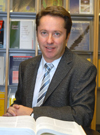 |
Juan Ignacio |
||
|
Born in Manresa, Spain. In 1988, he graduated in Theoretical Physics at the Complutense University, Madrid, and gained his PhD in 1991. He has been a member of the Max Planck Society since 2001, the year when he was appointed director of the Max Planck Institute of Quantum Optics (Garching, Germany).
As an expert in quantum computation and its application in the field of information, the focus of his research work is the quantum theory of information. His theories propose that quantum computers will bring a new revolution to the field of information, as this will lead to more efficient communication and far greater security in both data processing and bank transfers.
|
|||
 |
Claude |
||
|
|
|||
|
In 1973, he was appointed as Professor of atomic and molecular physics at the Collège de France in Paris, a position that he held for many years. His teaching experience led him to publish several textbooks, which are well appreciated by undergraduate and graduate physics students.
He pioneered the research into the various mechanisms that can be used to slow down, cool and trap atoms with a laser beam. Cohen-Tannoudji and his team were among the first to cool atoms to very low temperatures, lower than one millionth of a degree above absolute zero. The techniques designed by Cohen-Tannoudji and other scientists have resulted in various specific applications, such as more accurate atomic clocks and more precise atomic interferometers and gyrometers to measure the force of gravity and rotation speed. These techniques have been also essential for producing new states of matter like Bose Einstein condensates. He received, with Steven Chu and William Phillips, the 1997 Nobel Prize in Physics for the development of methods to cool and trap atoms with laser light.
|
|||
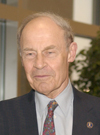 |
Dudley |
||
|
Born in San Jose (California). He received his B.S. degree in Mathematics (1954) and M.S. in Chemistry (1955) at Stanford University, followed by an A.M. degree in Physics (1956) and Ph.D. in Chemical Physics (1958) at Harvard University. He started lecturing in physics and chemistry at Berkeley University in 1958. In 1963 he returned to Harvard as Professor of Chemistry where he became Baird Professor of Science (1976-2003). He is now a Research Professor (Emeritus) at Harvard University. He also joined the Texas University faculty in 2005 as a part-time Professor of Physics.
|
|||
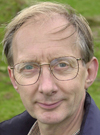 |
Sir John PENDRY Photonics Imperial College London, Reino Unido |
||
|
Born in England. He has been working at the Blackett Laboratory, Imperial College London (UK) since 1981.
He began his career in the Cavendish Laboratory at the University of Cambridge, followed by six years at the Daresbury Laboratory of the Science and Technology Facilities Council (UK), where he headed the theory group. In collaboration with the Marconi Company, he designed a series of completely novel artificial materials, or “metamaterials”, with properties not found in nature. Successively metamaterials with negative electrical permittivity, then with negative magnetic permeability were designed and constructed This project culminated in the proposal for a 'perfect lens' whose resolution is unlimited by wavelength. He is popularly known for his research into refractive indexes and creation of the first practical "Invisibility Cloak".
John Pendry was head of the physics department at Imperial College London and principal of the Faculty of Physical Sciences. The long list of awards he has received includes, among others, his post as fellow of the Royal Society (1984), honorary fellow of Downing College at Cambridge University, the Dirac prize (1996), the Royal Medal of the Royal Society (2006), as well as being knighted for his services to science (2004).
|
|||
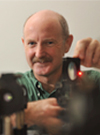 |
Rafael YUSTE
|
||
|
He pioneered the launching of the Brain Activity Map Project, a large-scale international effort to record and manipulate the activity of every neuron in brain circuits. This project has recently been sponsored by the Obama administration as the BRAIN initiative.
Rafael Yuste is Professor of Biological Sciences and Neuroscience at Columbia University. He was born and educated in Madrid, where he obtained his MD at the Universidad Autónoma in the Fundación Jimenez Diaz Hospital. After a brief research period in Sydney Brenner's group at the LMB in Cambridge, UK, he did Ph.D. studies with Larry Katz in Torsten Wiesel’s laboratory at Rockefeller University in New York. He then moved to Bell Labs, where he spent four years as a postdoctoral student of David Tank and Winfried Denk in the Department of Biological Computation, within the Physics Division. In 1996 he joined the Department of Biological Sciences at Columbia University. In 2005 he became HHMI Investigator and co-director of the Kavli Institute for Brain Circuits at Columbia.
Dr. Yuste and his laboratory are pursuing a "reverse engineering" strategy to understand the function of the cortical microcircuit, a basic element of cortex architecture. To study these questions, Yuste has pioneered the development and application of laser imaging techniques, such as calcium imaging of neuronal circuits, two-photon imaging and photostimulation using caged compounds and holographic spatial light modulation microscopy. These technical developments have resulted in several patents, two of which are commercially licensed.
Yuste has obtained many awards for his work, including that of New York City Mayor and the Society for Neuroscience's Young Investigator Awards. |
|||
News Bulletin
Enter your e-mail address to get updates of the conference
Last minute news
.................................................
Lectures videos at DIPC.TV
More information
.................................................
.................................................
Like us, find us,
follow us
![]()
![]()
![]()
![]()
.................................................
Get talking ...
![]() Tweets sobre "@DIPCehu OR @euskampus OR #quantum13"
Tweets sobre "@DIPCehu OR @euskampus OR #quantum13"
@DIPCehu | @euskampus
#quantum13
.................................................
Passion for Knowledge - Quantum 13
September 30 - October 6
Basque Country, Spain ![]()
Organized by:
DIPC within the framework of euskampus
Technical Secretariat
Lankor - Conferences and Events
Parque Empresarial Zuatzu, Edif. Zurriola planta baja local 5
20018 Donostia - San Sebastián
Tel: +34 943 42 81 11 E-mail: larraitz@lankor.com
Fax: +34 943 42 80 55 Web: www.lankor.com
Multiplatform
Web adapted to smarthphone and tablet.
Esta obra está bajo una Licencia Creative Commons Atribución-NoComercial-CompartirIgual 3.0 España 


